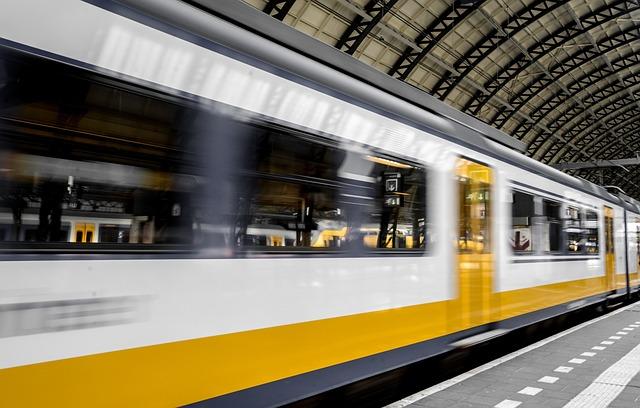In a world increasingly defined by rapid urbanization and climate challenges, infrastructure stands as the backbone of a nation’s growth and prosperity. For Pakistan, a country rich in cultural heritage and natural wonders, the journey toward sustainable development is not merely a necessity but an opportunity to reshape its future. As the government and various stakeholders embark on a comprehensive revamping of infrastructure, the focus shifts from traditional frameworks to innovative, eco-friendly solutions that promise resilience and inclusivity. This article delves into Pakistan’s ambitious plans, exploring how strategic investments in transport, energy, and urban planning can transform the landscape while addressing the urgent need for sustainability. Together, we’ll examine the critical steps being taken to pave the way for a greener, more prosperous tomorrow, and uncover the challenges and triumphs that chart Pakistan’s path to sustainable growth.
Harnessing Renewable Energy Solutions for a Resilient Future
As Pakistan grapples with the challenges of economic growth and environmental sustainability, the integration of renewable energy sources offers a viable path forward. By deploying technologies such as solar, wind, and hydropower, the country can unlock a treasure trove of clean energy while reducing its dependence on fossil fuels. Key benefits of renewable energy solutions include:
- Energy Security: Diversifying energy sources mitigates risks associated with energy imports.
- Job Creation: The renewable sector can generate numerous jobs in installation, maintenance, and research.
- Environmental Impact: Reducing carbon emissions contributes to a healthier ecosystem and combats climate change.
To achieve a resilient energy future, investments in infrastructure are crucial. Upgrading the grid to support distributed generation and lower transmission losses can optimize energy distribution. Additionally, implementing energy storage solutions can enhance reliability and stability. A potential roadmap for Pakistan’s energy infrastructure includes:
| Strategy | Benefit |
|---|---|
| Expand Solar Parks | Maximize sunlight utilization across diverse regions. |
| Invest in Wind Farms | Leverage wind resources in coastal and hilly areas. |
| Enhance Grid Connectivity | Facilitate energy sharing between provinces. |

Modernizing Urban Transit Systems: A Blueprint for Efficiency
The evolution of urban transit systems is paramount for fostering economic productivity and enhancing the quality of urban life. In Pakistan, where rapid urbanization persists, a strategic overhaul of transit infrastructure can catalyze sustainable growth. To achieve this, the integration of technology and innovative mobility solutions is essential. By adopting a multimodal transport approach, cities can benefit from interconnected systems that ease congestion and reduce carbon footprints. This modernized framework could include:
- Smart Traffic Management: Utilizing AI to optimize traffic flow, reducing delays.
- Real-Time Data Analytics: Providing commuters with up-to-date information on transit options.
- Electric and Hybrid Vehicles: Promoting eco-friendly options in public transport.
Furthermore, investment in infrastructure that prioritizes walkability and cycling can significantly reduce reliance on private vehicles. Cities should consider the establishment of dedicated bike lanes and pedestrian-friendly pathways, thereby creating a sustainable and healthy urban environment. By fostering collaboration between governmental bodies and local communities, Pakistan can create a blueprint that not only revitalizes its aging infrastructure but also sets a precedent for future urban development. The potential benefits from such initiatives include:
| Benefit | Description |
|---|---|
| Environmental Sustainability | Reduction in greenhouse gas emissions and improved air quality. |
| Economic Growth | Increased job creation during construction and operational phases. |
| Enhanced Mobility | Quicker and more efficient transportation options for citizens. |

Enhancing Water Management Strategies to Combat Resource Scarcity
As Pakistan grapples with the pressing issue of water scarcity, a multifaceted approach to water management is paramount. Innovative practices can significantly enhance water conservation and distribution, ensuring equitable access to this vital resource. Key strategies include:
- Rainwater Harvesting: Encouraging the collection and storage of rainwater to mitigate dependency on traditional sources.
- Wastewater Recycling: Implementing treatment facilities to repurpose wastewater for agriculture and industrial processes.
- Smart Irrigation Techniques: Utilizing technology such as drip irrigation to maximize water efficiency in farming.
- Community Engagement: Involving local communities in managing water resources to foster a sense of ownership and responsibility.
Moreover, optimizing existing infrastructure plays a critical role in improving resource management. By conducting thorough assessments of current systems, authorities can identify inefficiencies and prioritize upgrades. A potential framework could include a structured analysis table:
| Infrastructure Aspect | Current State | Proposed Improvement |
|---|---|---|
| Canal Systems | High evaporation rates | Install shade nets and improve lining |
| Water Treatment Plants | Outdated technology | Upgrade to modern filtration and recycling systems |
| Piped Water Supply | Frequent leaks | Regular maintenance and smart water meters |
By focusing on these strategic enhancements, Pakistan can bolster its water resource management, paving the way for sustainable growth that not only addresses current challenges but also prepares for future demands.

Innovative Public-Private Partnerships: Driving Infrastructure Development
The success of infrastructure development in Pakistan hinges on the strategic collaboration between the public and private sectors. By leveraging each other’s strengths, these partnerships can create a dynamic environment that fosters innovation and efficiency. Public agencies can benefit from the capital investment and expertise of private firms, while private companies gain from access to public projects and government support. Critical areas of focus include:
- Transportation Networks: Enhancing roads and railways for improved connectivity
- Energy Projects: Developing renewable energy sources to combat shortages
- Water Supply Systems: Modernizing infrastructure to ensure clean water access
- Smart Cities Initiatives: Implementing technology solutions for urban planning
To effectively streamline these projects, establishing a robust framework is essential. A well-structured approach can guide project selection, financing, and execution, reducing the risks associated with infrastructure investments. Consider this simplified overview of potential project outcomes influenced by innovative partnerships:
| Project Type | Private Sector Role | Expected Outcome |
|---|---|---|
| Transportation | Construction & Maintenance | Reduced Travel Times |
| Energy | Investing in Renewables | Increased Energy Security |
| Water | Technology Implementation | Enhanced Water Quality |
| Smart Cities | Innovation & Development | Improved Urban Living Standards |
Final Thoughts
As Pakistan stands on the cusp of transformative change, the journey toward revamping its infrastructure emerges as a pivotal chapter in its narrative of sustainable growth. By weaving together innovation, investment, and inclusivity, the nation not only seeks to bridge the gaps of the past but also to construct a resilient framework for the future. The road ahead is filled with challenges, yet it is also rich with opportunities that can uplift communities and empower generations. The call for a concerted effort—where government, private sector, and citizens alike unite—echoes throughout this endeavor. In nurturing a holistic approach to infrastructure development, Pakistan can pave pathways that not only connect cities and rural heartlands but also foster a sense of unity and purpose. As the nation embarks on this ambitious journey, the vision of a sustainable and thriving Pakistan comes closer into focus, reminding us that the strength of a country lies not just in its structures, but in the sustainable future it builds for all its people.



